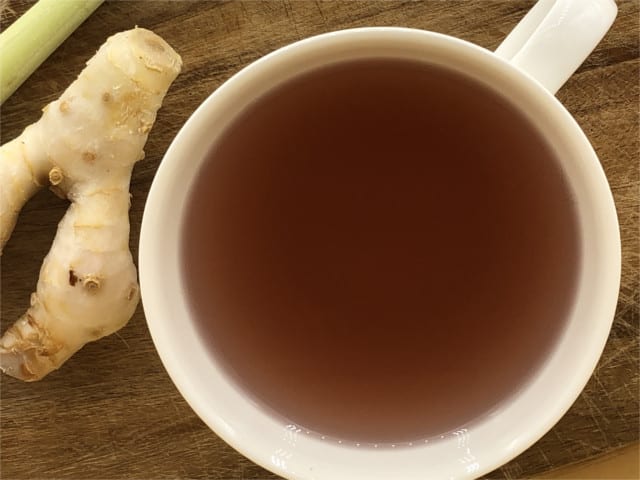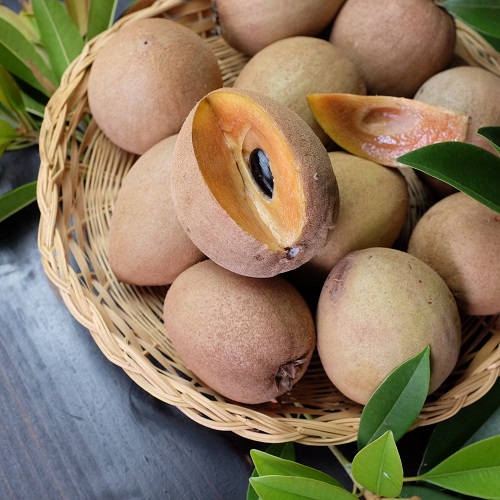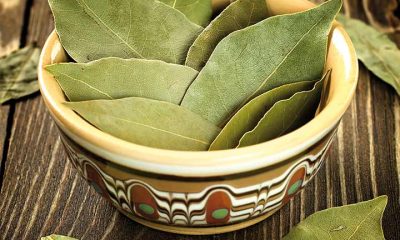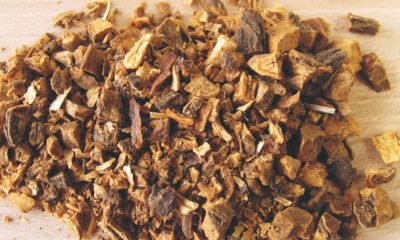Food
Benefits of galangal and how to make it

Table of Contents
Discover the benefits of galangal root tea and how to make it.
Rhizome of the Zingiberaceae family, close to ginger, from the Alpinia galanga or Alpinia officinarum variety, with us, you can buy galangal, and use it in many ways, including as an infusion, in particular, to take advantage of its virtues for health.
Discover the recipe for galangal herbal tea, as well as the properties of galangal infusion for health, and advice on how to use it best.
The medicinal information in this article is for informational purposes, in case of any health problem, consult a doctor.
Recipe for galangal tea
Ingredients
• 1 g of galangal rhizome
• 250 ml of water
Preparation of the recipe
- Put the root in cold water. Make a decoction, that is to say, heat the water, then, at the boil, let boil for another 2 minutes, then remove from the heat.
- Leave to infuse for 10 minutes, ideally covered, so as not to let the essential oils evaporate.
- Add, if desired, honey and lemon.
Tips for use
It is generally advisable to drink one cup, up to 3 times a day. It gives a powerful drink with spicy notes, really delicious.
Health benefits of galangal
Galangal has many benefits on digestion. With its anti-inflammatory and analgesic properties, it is recommended for digestive disorders, such as stomach aches, spasms, gas, bloating, vomiting, etc.
Galangal would help heal ulcers and relieve chronic or temporary inflammation of the digestive tract.
Galangal has antiemetic properties, that is to say against nausea and vomiting, in particular against motion sickness, but also nausea of pregnancy, but in small doses, and with the agreement of the doctor.
It has tonic properties to fight against asthenia and all its symptoms: weakness, physical fatigue, mental fatigue, loss of libido, etc.
In traditional Chinese medicine, galangal is prescribed against abdominal pain, vomiting, diarrhea, and for its antibacterial effects. It is also credited with action against pain, in particular against rheumatic pain and osteoarthritis.
Galangal is renowned for its antiseptic, antifungal, antiviral, and anti-tussic properties, which makes it a stimulant of the immune system and a natural remedy against winter ailments: colds, flu, nasopharyngitis, etc.
Final thought
The galangal rhizome was widely used by the famous Hildegard of Bingen, nun, and doctor of the 13th century, mother of naturopathy, who prescribed the root for its stimulating and carminative properties. In her books, she nicknames galangal “spice of life” about its benefits.
Food
5 benefits of tangerine peel

Table of Contents
Food
12 Benefits of Chikoo fruit and side effects

Table of Contents
- Chikoo Tree
- How to use Chikoo fruit or sapote
- Chikoo (Sapodilla) Juice Recipes
- Health Benefits of Chikoo fruit or Sapodilla
- 1.- Add Energy
- 2.- Better metabolism
- 3.- High fiber
- 4.- Benefits of the chikoo fruit for digestion
- 5.- Benefits of the chikoo fruit for weight loss
- 6.- Relief stomach problems
- 7.- Benefits of the chikoo fruit for inflammation
- 8.- Benefits of the chikoo fruit for eyes
- 9.- Anti-Bacterial
- 10.- Increase the immune system
- 11.- Support for the well-being of the body
- 12.- Benefits of the chikoo fruit for hair
- 13. Benefits of the chikoo fruit for skin
- 14.- Antioxidant
- 15.- Benefits of the chikoo fruit for children
- Side effects of Chikoo fruit or Sapote
- Discover the 12 shocking health benefits of Chikoo fruit or sapote and side effects.
Many people around the world might not be familiar with the tree and the benefits of the chikoo fruit.
But the different way in Asia. This common fruit that grows in many countries is quite favorable.
With the small size of the fruit and the authentic taste that feels good in the mouth, chikoo is quite common to find in the traditional market.
Also, the tree is commonly grown in the backyard and generally yields an enormous amount of fruit.
-
Chikoo Tree
The Chikoo tree can be listed as an easy tree to grow in various countries. Therefore, it is common to see that the tree is grown in many places.
Mainly in a country with a tropical climate like Mexico, Thailand, Malaysia, Bangladesh, and even in Indonesia. This tree is also known and famous for the sapodilla.
For those who don’t know what the sapote tree looks like, it can usually grow up to 30 meters and the diameters can go up to 1.5 meters.
The leaves are medium green in color and also look shiny. While the fruit is brown with the flesh a little orange.
The flavor of the fruit is very sweet and malty. Usually, in a year, it can produce fruit twice. Inside the fruit, there are usually several black seeds.
How to use Chikoo fruit or sapote
There are several ways to consume chikoo fruit and feel the benefits. If you want to know more, here are some lists of how to use chikoo fruit and reap the benefits.
1.- Direct consumption
It is the easiest way to obtain the ripe fruit and consume it directly. Make sure to clean it first before peeling the skin and then consuming the meat.
2.- Make a cake
Some creative people mix meat with various ingredients and produce a cake by baking or steaming it. It can be mixed with walnuts or almonds and can also be used as a single ingredient.
3.- Infused water
The fruit is also suitable for making water in the form of an infusion. Even this might not be very common, but it has been done by several people and it can still provide good taste and benefit.
4.- Fruit salad
Cut up some chikoo meat and mix it with other fruits. Mix it with low-calorie yogurt and it can make a delicious fruit salad.
5.- Juice or milkshake
Another common way is to produce chikoo juice or even make a shake with chikoo meat. The shake is usually a combination of chocolate or vanilla ice cream. While the juice can be using a single chikoo fruit or mixing it with other ingredients.
6.- As the syrup
Some people with certain medical conditions make chikoo fruit as ingredients for chikoo syrup. Hence, it is also capable of producing delicious syrup as well.
Chikoo (Sapodilla) Juice Recipes
For those interested in making chikoo juice, there are several recipes to try. Below are the details of this.
• Recipe 1
Mix in the chikoo fruit choosing the ripe meat. Avoid using green meat otherwise, the taste is simple. Mix it with a little lemon extract to give it various bitter flavors and avoid an overly sweet taste.
• Recipe 2
Mix the chikoo fruit with other fruits like banana, apple, avocado, or pear. It will provoke a different flavor when combined with different fruits. Therefore, to achieve a different feeling of consuming chikoo fruit, always combine with different fruits every day.
• Recipe 3
Mix the chikoo fruit with milk and sugar. This can produce a feeling of fullness. So it can be one of the healthy afternoon snacks.
Health Benefits of Chikoo fruit or Sapodilla
By looking at the nutrient content of the fruit, it can be concluded that chikoo can bring many benefits. Below are some top health benefits of the chikoo fruit points list.
1.- Add Energy
Chikoo fruit is high in calories and sugar. Therefore, it can help provide more energy to support daily activities.
In addition, it will help to avoid hunger and it is best to maintain the energy level if it is consumed for breakfast.
2.- Better metabolism
The calories within the chikoo fruit will help to produce a better metabolism system. It will manage the body to increase the metabolic rate and lead to the optimal conversion of food into necessary energy.
That is why it also stimulates oxygen distribution throughout the body and leads to the optimization of the oxygen level in the brain.
3.- High fiber
Chikoo fruit also contains a large amount of fiber. Therefore, it can help to be a natural source of fiber and manage a better digestive system.
When the digestive system works well, it means that the intestine works quite well as well. Therefore, it can help avoid digestive problems.
4.- Benefits of the chikoo fruit for digestion
An optimal digestive will usually lead to rapid digestion.
Regulates bowel movements and creates a rapid digest in the stomach. That is why consuming chikoo will stimulate a better bowel movement.
5.- Benefits of the chikoo fruit for weight loss
When the body’s metabolism and digestive system work fairly well, the body can absorb more nutrients from food. This will cause the body to absorb various necessary vitamins and minerals.
This is one of the mechanisms of how the body will avoid fat gain and naturally reduce weight slowly. Therefore, chikoo is also one of the good alternatives to promote weight loss.
6.- Relief stomach problems
Other unexpected health benefits and uses of chikoo (sapodilla) fruit and juice are to ease any stomach problems.
It includes stomach pain and also helps relieve constipation as well. Where it is common to occur when the stomach contains too much gas.
By consuming chikoo, you will help to absorb gas and make your stomach feel better, and avoid heartburn.
7.- Benefits of the chikoo fruit for inflammation
The nutrient within the chikoo fruit benefits can prevent inflammation as well.
Especially the tannin content within the fruit that works to reduce the inflamed swollen area and help soothe the pain. Also, it can reduce redness and bring fast recovery.
8.- Benefits of the chikoo fruit for eyes
Chikoo fruit also contains vitamin A which will support eye health. You can achieve healthy vision and prevent new eye infections. Therefore, consuming chikoo can maintain vision for a longer period.
9.- Anti-Bacterial
Not only does it benefit as an anti-inflammatory, but the fruit is also good at acting as an antibacterial agent.
Therefore, it will help to avoid new bacterial infections in the body. Also, this can help the body avoid other diseases as well.
Since bacteria can cause some infections like stomach infection, brain infection, and many more.
10.- Increase the immune system
The vitamin C within this fruit will bring better immunity. It will help to stimulate the immune system naturally. Thus, it will lead to a better and stronger body to avoid more bacterial or viral infections.
11.- Support for the well-being of the body
When immunity increases, the health of the body will increase accordingly. In addition, it can lead to better body well-being that keeps you away from any disease. You will avoid any possibility of illness and maintain a strong and healthy body.
12.- Benefits of the chikoo fruit for hair
Not many people would understand that chikoo is also good for healthy hair. This will lead to a healthy scalp surface and prevent further problems like hair loss and dandruff.
This is the reason why many herbal shampoos also use the benefits of the chikoo fruit as ingredients to make the most of the extract and produce better hair shine and healthier hair conditions.
13. Benefits of the chikoo fruit for skin
Since the fruit is capable of acting as an anti-inflammatory, it is good to treat any skin inflammation such as eczema.
Also, it will help to create smoother skin and prevent any appearance of acne in the face area of the skin. Hence, consuming the fruit will lead to healthy skin.
14.- Antioxidant
Chikoo fruit is also a good antioxidant. This will benefit the body to avoid any free radical effects that usually come from pollutants or ultraviolet light.
Therefore, it is a good way to naturally avoid the signs of early aging and avoid the symptoms of cancer.
15.- Benefits of the chikoo fruit for children
It is quite surprising that the fruit is also good for children. Especially to add bone mass and help children grow.
Also, it will lead to a healthy body and prevent various diseases for children. By increasing the immune system of children, it can lead to a better child to grow and develop.
Side effects of Chikoo fruit or Sapote
Chikoo or Sapote provides many benefits, but on the other hand, it gives several side effects as well.
Even these side effects are not happening to everyone, still, it is important to be careful.
Therefore, it is best to see the following precautions if this is your first time trying chikoo fruit.
- Watch out for any itchy, rash, or red skin reaction. This means that your body is allergic to the fruit.
Therefore, it is better to avoid consuming this fruit again in the future.
- This fruit tastes very sweet. Therefore, people with symptoms of diabetes should avoid consuming too much fruit. Otherwise, it can easily spike your blood sugar level and lead to the worst diabetic diseases.
- The sweet taste can also cause a sore throat. Therefore, keep monitoring the amount of fruit you consume every day to prevent a sore throat from occurring.
- Clean the fruit well before consuming it to avoid the effect of tannin and latex acid on your skin. Otherwise, it can lead to mouth irritation and ulcer.
- Excess consumption can also cause stomach problems, as the fruit is rich in fiber. Therefore, always eat in the right portions and avoid consuming too much fruit.
Those are all the health benefits of chikoo (sapote) fruit. Not only is it easy to find, apparently the fruit has many health advantages.
Therefore, one of these exotic fruits is worth consuming many times. Also, don’t worry about having a hard time getting the fruit.
If you live in a tropical country, it will easily grow in the backyard. Just make sure you understand the way to grow the plant first.
Then when the harvest season comes, you can get the benefit every day.
Related Searches…..
Sapodilla benefits and side effects
Chiku fruit in English
How many chikoo in a day
Can we eat chikoo at night
Sapodilla leaf health benefits
Food
19 Benefits of nutmeg and side effects

Table of Contents
- What is nutmeg?
- Nutrition facts of nutmeg
- Health benefits of Nutmeg
- 1.- Benefits of nutmeg for Pain
- 2.- Benefits of nutmeg for digestion
- 3.- Benefits of nutmeg for brain health
- 4.- Detoxifies the body
- 5.-Promotes oral health
- 6.- Benefits of nutmeg for sleep
- 7.- Avoid cancer
- 8.- Benefits of nutmeg for Skin care
- 9.- Benefits of nutmeg for blood pressure
- 10.- Antioxidant properties
- 11.- Antidepressants
- 12.- Aphrodisiac action
- 13.- Production of red blood cells
- 14.- Eliminate and cure acne
- 15.- Fight against skin infection and signs of aging
- 16.- Benefits of nutmeg for men sexually
- 17.- Varicose vein disease
- 18.- Rheumatism, joint pain
- 19.- Benefits of nutmeg for neuralgia
- Cinnamon and nutmeg health benefits
- How to use nutmeg powder
- How much nutmeg to eat daily
- How to use nutmeg powder in cooking
- Nutmeg uses in cooking meat
- Contraindications and side effects of nutmeg
- Discover the 19 Shocking Health Benefits Of Nutmeg and side effects.
The health benefits of nutmeg make it a safe food to consume, nutmeg is a very popular spice and widely used in meals and desserts.
For many it is a simple culinary species, for others a rich alternative for health, in this article to learn more about its benefits.
- What is nutmeg?
- Nutrition facts of nutmeg
- Health benefits of Nutmeg
- 1.- Benefits of nutmeg for Pain
- 2.- Benefits of nutmeg for digestion
- 3.- Benefits of nutmeg for brain health
- 4.- Detoxifies the body
- 5.-Promotes oral health
- 6.- Benefits of nutmeg for sleep
- 7.- Avoid cancer
- 8.- Benefits of nutmeg for Skin care
- 9.- Benefits of nutmeg for blood pressure
- 10.- Antioxidant properties
- 11.- Antidepressants
- 12.- Aphrodisiac action
- 13.- Production of red blood cells
- 14.- Eliminate and cure acne
- 15.- Fight against skin infection and signs of aging
- 16.- Benefits of nutmeg for men sexually
- 17.- Varicose vein disease
- 18.- Rheumatism, joint pain
- 19.- Benefits of nutmeg for neuralgia
- Cinnamon and nutmeg health benefits
- How to use nutmeg powder
- How much nutmeg to eat daily
- How to use nutmeg powder in cooking
- Nutmeg uses in cooking meat
- Contraindications and side effects of nutmeg
What is nutmeg?
Nutmeg is a species that is extracted from an evergreen tree with the scientific classification Myristica Fragrans which gives a species called nutmeg, it is native to the islands near Indonesia and is one of the most used spice in the world.
These trees produce nutmeg, which is the seed of the tree.
Nutmeg is known to be a delicate and slightly sweet spice used primarily in cuisines around the world.
The tree is no less important as it is also popular due to essential oils derived from the bark and leaves.
This species is considered a popular dietary supplement that has that healthy touch and taste.
The essential oils that are extracted from nutmeg are very beneficial for health and were often prepared in alternative and herbal medicines.
History of nutmeg
Nutmeg originates from Indonesia. It made its presence in Europe in the 15th century through the Portuguese and Dutch who made it known.
Nutmeg was also exported to the West Indies for cultivation.
Nutmeg was used in the 16th century as a sedative for merchant ship slaves, which had an effect on pain.
Nutmeg is one of those spices that can easily contribute to the well-being of all of us if we know how and why to use it.
Nutrition facts of nutmeg
Nutmeg is used sparingly in dishes, however, this species has many nutrients that make it a source, mainly vitamins, minerals and organic compounds related to essential oils.
These helpful components contain dietary fiber, manganese, thiamine, vitamin B6, folic acid, magnesium, copper, and macelignan.
Nutmeg is a vitamin complex of group A, BYC (B1, B2, B4, B6), A, C, PP, folic acid and β-carotene. Also in large quantities, it contains macronutrients (Mg, K, P, Ca, Na) and trace elements (iron, zinc, copper, manganese, selenium).
Nutmeg is quite rich in calories: 525 kcal per 100 g. Its nutritional value per 100 g is: protein – 5.84 g, fat – 36.31 g, carbohydrate – 28.49 g, mono and disaccharide – 28.49 g, fiber – 20.8 g, water – 6.23 g.
Health benefits of Nutmeg
Below are the health benefits of nutmeg;
1.- Benefits of nutmeg for Pain
One of the health benefits of nutmeg is that it acts as a natural pain reliever, very similar to menthol.
Therefore, by adding it as a spice in your cooking, you can reduce pain associated with injuries, strains, and chronic inflammation caused by conditions such as arthritis.
The calcium found in nutmeg can improve bone health by supporting repair and growth, while relieving the symptoms of osteoporosis.
2.- Benefits of nutmeg for digestion
To stimulate good digestion, nutmeg can be ground into a powder that is rich in fiber, which promotes peristaltic movement in the smooth muscles of the intestine.
It can in fact induce the secretion of various gastric and intestinal juices that make the digestive process easier.
In addition, it facilitates the absorption of nutrients by food, which makes digestion efficient and fast.
Since fiber can promote bowel movements, it also decreases the frequency and discomfort of constipation and other intestinal symptoms.
3.- Benefits of nutmeg for brain health
Studies made from nutmeg show that the myristicin and macelin found in nutmeg keep the brain at a normal and healthy level .
This is one of the less popular but effective benefits, adding nutmeg to any variety of the diet reduces the degradation of neural pathways and cognitive functions that often affect people with dementia or Alzheimer’s disease.
4.- Detoxifies the body
The toxins accumulated in the kidneys and liver generate certain diseases, the nutmeg acts as a detoxifier as a result, generates good body health, by cleaning the organs of all stored toxins from sources such as alcohol, drugs, contamination or feed them.
Additionally, the active ingredients in nutmeg help dissolve kidney stones and increase the overall function and effectiveness of the kidney and liver.
5.-Promotes oral health
The antibacterial components present in nutmeg make it a key factor for oral health.
The active components present in this species fight conditions such as halitosis, also known as bad breath.
Nutmeg kills bacteria that cause poor oral health and strengthens the immunity of the gums and teeth.
Therefore, nutmeg promotes oral health, and they are also commonly found in toothpastes and mouthwashes, especially organic or herbal varieties.
6.- Benefits of nutmeg for sleep
For generations and ages, nutmeg has been recommended and used as a natural and effective remedy to fight insomnia.
A small pinch of nutmeg and hot milk is still the effective trick.
Serotonin is transformed into melatonin in the brain, which induces good sleep, thus relieving people with the problems of insomnia and restlessness at night.
Nutmeg does indeed contain trace elements, which do not have any dramatic effect if not consumed in massive quantities.
However, a small amount can help you release various neurotransmitters which, in turn,
7.- Avoid cancer
Another benefit of nutmeg for health is that its potential use against cancer cells is effective, it has been proven through studies that its metabolic compound and essential oil are involved in cell death (apoptosis) in leukemic cells, which decreases the spread and metastasis of this terrible variety of cancer that usually affects children.
8.- Benefits of nutmeg for Skin care
Although the exact component is not fully understood, traditional and herbal remedies have used nutmeg for years to improve the appearance and health of the skin.
Most of the time, it is applied as a paste mixed with water, or even honey, which is also great for skin care.
It can help reduce skin inflammation and irritation, promote hydration and a smooth appearance, and reduce the signs and marks of smallpox, boils, and acne.
9.- Benefits of nutmeg for blood pressure
The mineral content that nutmeg possesses means that it is valuable for maintaining organ function.
The potassium in nutmeg is a vasodilator that relaxes blood vessels, lowering blood pressure and reducing stress on the cardiovascular system.
Finally, the iron content can increase your red blood cell count and reduce the chances of developing iron deficiency symptoms, also known as anemia.
Copper is also an important nutrient found in muscads and helps maintain blood pressure and therefore also contributes to heart rate balance.
10.- Antioxidant properties
The antioxidant properties of nutmeg are very useful for the proper functioning and development of the human body.
Nutmeg has antioxidants that prevent the formation of free radicals that can trigger unwanted reactions in the body.
These reactions can lead to many serious compound formations and can even be cancerous.
11.- Antidepressants
Some of the active components found in nutmeg are able to prevent early depression.
12.- Aphrodisiac action
This aromatic and culinary spice has been used as an aphrodisiac for centuries and also has stimulating hormonal properties.
13.- Production of red blood cells
The iron content of nutmeg improves the amount of red blood cells in the blood.
14.- Eliminate and cure acne
Nutmeg has antibacterial effects which can be used as a natural homemade scrub with a mixture of orange and nutmeg.
These scrubs work incredibly well when it comes to removing acne and blackheads.
When nutmeg is mixed with honey and cinnamon, it is a powerful antimicrobial and antiseptic paste.
Mix each of the ingredients mentioned above in equal proportions and apply the mixture every morning.
Store for about 10-15 minutes, then rinse with cold water. Helps reduce acne and reduce scars.
15.- Fight against skin infection and signs of aging
Nutmeg is widely used for its antibacterial and pain relieving properties. Helps reduce wrinkles, fine lines, and other signs of aging.
16.- Benefits of nutmeg for men sexually
A small amount of nutmeg spices in your daily ration increases sexual activity in men, just as consuming nutmeg tincture with alcohol is effective in arousing sexual desire.
The method of its preparation: a glass of nutmeg powder, a glass of crushed ginger, 0.5 glass of anise seeds, pour 0.7 – 1 l of purified medical alcohol. Infuse for a week, shaking the bottle periodically.
17.- Varicose vein disease
Nutmeg tincture has been used to treat varicose veins. It is prepared as follows: 100 g of honey and 20 g of nutmeg for a slightly cooled glass.
After cooling completely, take one tablespoon three times a day for 20 minutes before eating.
18.- Rheumatism, joint pain
The use of vegetable oil paste and nutmeg powder is used, the mole must be mixed and applied in a preheated way. Keep until cool.
19.- Benefits of nutmeg for neuralgia
With this problem, ointments, lotions and compresses turn out to be a relief. nutmeg powder has been shown to combat these symptoms, consuming a little in a glass of water is a good alternative.
Cinnamon and nutmeg health benefits
It has been discovered that a mixture of cinnamon, nutmeg, and other spices contain nutrients that sharpen memory, reduce stress, or improve sleep, among other benefits.
How to use nutmeg powder
Nutmeg is a common component in many cooking spots, including European and Indian. There are many ways to add nutmeg powder to your diet, including:
- Add it to coffee, hot chocolate, tea, or warm milk
- Use it to season vegetables such as cauliflower and sweet potato
- Sprinkle over oatmeal or other breakfast cereals
- Sprinkle over fruit for an added kick
- Bake with it. Nutmeg is a key ingredient in many baked goods
- Add to seasonal beverages such as eggnog, mulled cider, and mulled wine
- Use it in fall dishes, such as ones that feature pumpkin or other winter squashes
- Try cooking dishes from Southern and Southeastern Asia or visit a new restaurant that offers the cuisine. The spice comes from Indonesia, and it features prominently in the food from this part of the world.
How much nutmeg to eat daily
There are no particular approaches on how much nutmeg to eat per day, its recommended that you should not surpass 1 to 2mg a day. Researches indicate that toxic reactions occur when taken at 5g and above.
How to use nutmeg powder in cooking
Nutmeg powder in foods greatly enhances their flavor. Drizzle nutmeg powder over the top of quiche, scrambled eggs, omelets, pancakes, French toast and breakfast baked goods like muffins. Do so while the the food is warm and freshly cooked or baked so that the nutmeg powder seeps into the dish.
Nutmeg uses in cooking meat
Nutmeg powder is also often used in delicious meat-based dishes, where it subtly improves and sessions out the flavor.
Nutmeg powder also pairs very well with winter squash and dark leafy greens.
Contraindications and side effects of nutmeg
The contraindications of nutmeg have generated a lot of suspicion as accidental poisoning has increased in recent years.
Overeating can have psychotropic, hallucinatory, or narcotic effects on people, and many people have tried to reproduce these effects recreationally.
Unfortunately, consuming a large amount of nutmeg can complicate your bodily processes, as it is a powerful spice designed to be used in small amounts. Overeating can cause seizures, irregular heartbeats, and vomiting.
When used properly, like a spice, the benefits are obvious, but keep the amount in check and find your thrills elsewhere!
Related Searches…
How to make nutmeg drink
Nutmeg and cinnamon tea benefits
Nutmeg and ginger tea
Nutmeg and Chamomile tea
How to use nutmeg
Nutmeg benefits for men
How much nutmeg to eat daily
Nutmeg benefits for female
-

 Food5 months ago
Food5 months ago10 + Benefits of carrot juice and side effects
-

 Food5 months ago
Food5 months ago8 shocking benefits of leek juice and side effects
-

 Health5 months ago
Health5 months agoBenefits of guava leaves Sensually
-

 Health5 months ago
Health5 months ago10 shocking health benefits of Canary seed milk
-

 Health5 months ago
Health5 months ago7 health benefits of cashew leaves and side effects
-

 Health5 months ago
Health5 months ago13 shocking health benefits of Thai eggplant
-
Weight Loss5 months ago
Chrissy Metz Weight Loss Secret (2022)
-

 Weight Loss5 months ago
Weight Loss5 months agoKelly Osbourne weight loss 2022












